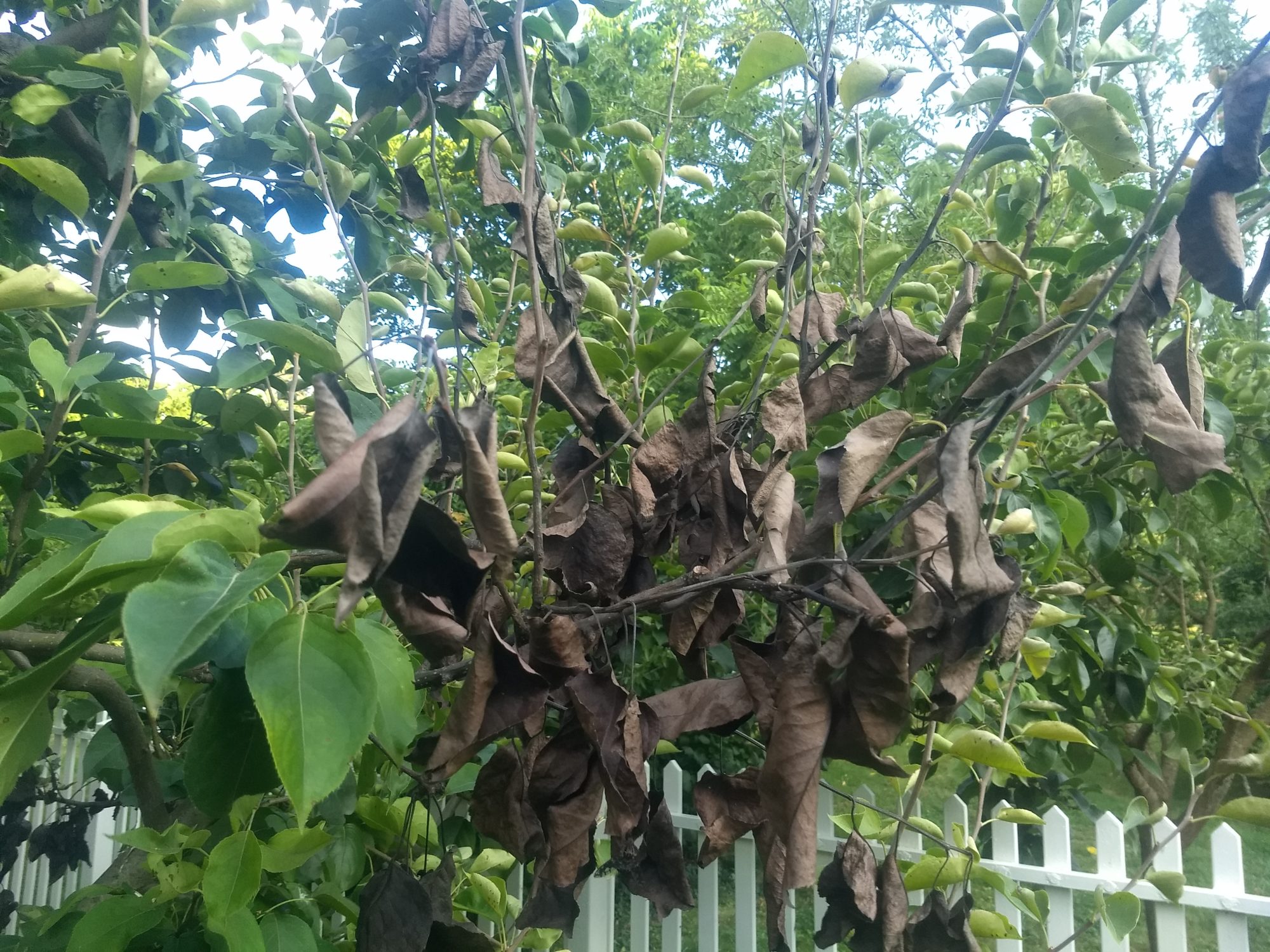Please check out our new POP Monthly Orchard Task List for recommended maintenance activities to complete this month!
Here is some more detail on some of the key tasks for July.
Orchard Watering: New plantings (from this spring or last fall) should be watered thoroughly once per week throughout the summer months. In most years in our wet climate, established orchard plantings don’t require much in the way of supplemental watering. However, after the hot and dry June we just had, many orchard plants would be glad of some additional water!
Summer Weeding: With the hot weather many weeds are growing rapidly and some will begin to go to seed. Weeding at least once a month is advisable for orchards and food forests throughout the summer months! POP’s weed identification guide is available for sale on our website and we always have free copies to distribute to community orchard partners. Check out POP’s guide to Ramial Wood Chips and Weeding in Place.
Remove Orchard Spreaders: Any limb spreaders or other means used to train branches to wider angles in the winter and early spring can be safely removed in July. By this time, branches should stay in their new position. Leaving spreading devices too long can result in them getting stuck and possibly damaging the tree upon later removal.
Emergency Pruning: During the summer months, most pruning should be limited to emergency pruning only.
Keep an eye out for any diseased, damaged, or dead wood that should be pruned away no matter the season. Pay special attention to the base of trees – especially of the stone fruit varieties: apricots, peaches, plums, nectarines – and prune away root suckers, the quick upright growth that can be a cover for dreaded borers, which make a home beneath trunk wood.

Remember: use sharp, rust-free hand tools and sanitize between every cut for disease prone trees during the growing season. For easy disinfecting, we recommend carrying a spray bottle with you of rubbing (isopropyl 70%) alcohol or a bleach solution (1 part bleach: 10 parts water) to wipe down tools.
Pest and Disease Monitoring & Identification: Many orchard pests and diseases are active throughout the summer months and it is important to continue weekly monitoring of your plants to identify and manage challenges. Some of the most common insect pests to contend with in July include:
Aphids
Oriental Fruit Moth
Spotted Lanternfly
Apple Maggot
Plum Curculio
Codling Moth

Observe your orchard regularly throughout the year for pest and disease problems, identify and respond appropriately. We’ve begun distributing physical copies to community partners, but in the meantime you can check out our POP’s Scouting Guides for pest and disease management available for download on POP’s website: https://www.phillyorchards.org/resources/pop_handouts/
These guides are intended to help properly identify the insect pests and diseases that affect the following common fruit trees:
Apples
Peaches
Cherries
Plums (& Apricots)
Pears & Asian Pears
The guides include lots of photos and a description of how to identify the particular pest or disease and the damage caused by it. Proper identification is essential to treating these problems, as each has its own unique options for management! Once you have identified a pest or disease, you can then consult our website for management recommendations by using our search function:
https://www.phillyorchards.org/search/
Keep resources available on specific tasks for Oriental Fruit Moth, Brown Rot, and Spotted Lanternfly management for July.
Remove Damaged and Dropped Fruit
Although the ideal time for thinning fruit has passed, it is still advisable to continue to monitor your developing crops for insect and disease damage and remove the affected fruit. Similarly, it is advisable to gather any fallen fruit to avoid the further spread of pest and disease challenges. All fruit should be disposed of by adding to a hot compost system, feeding to poultry, or bagging up to remove from the site.

Summer Harvests!
Look out for ripening raspberries, blueberries, blackberries, apricots, peaches, mulberries, currants, gooseberries, perennial herbs and greens, and more! Record your harvests using our handy POP Harvest Tracking Sheet.
Enjoy the summer harvests and stay cool in the heat!
This POP Blog Post was written by POP Co-Executive Director Phil Forsyth, and re-edited for blog posting by POP Intern Cortina Mallozzi
SUPPORT US! If you found this entry useful, informative, or inspiring, please consider a donation of any size to help POP in planting and supporting community orchards in Philadelphia: phillyorchards.org/donate.